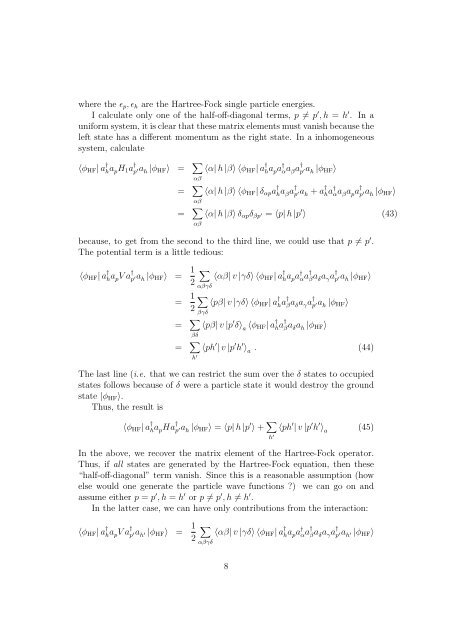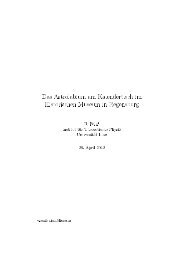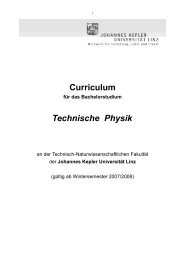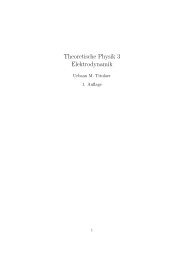Linear response and Time dependent Hartree-Fock
Linear response and Time dependent Hartree-Fock
Linear response and Time dependent Hartree-Fock
Create successful ePaper yourself
Turn your PDF publications into a flip-book with our unique Google optimized e-Paper software.
where the ɛ p , ɛ h are the <strong>Hartree</strong>-<strong>Fock</strong> single particle energies.<br />
I calculate only one of the half-off-diagonal terms, p ≠ p ′ , h = h ′ . In a<br />
uniform system, it is clear that these matrix elements must vanish because the<br />
left state has a different momentum as the right state. In a inhomogeneous<br />
system, calculate<br />
〈φ HF | a † h a pH 1 a † p ′a h |φ HF〉 = ∑ αβ<br />
= ∑ αβ<br />
= ∑ αβ<br />
〈α| h |β〉 〈φ HF | a † h a pa † αa β a † p ′a h |φ HF〉<br />
〈α| h |β〉 〈φ HF | δ αp a † h a β a† p ′a h + a† h a† αa β a p a † p ′a h |φ HF〉<br />
〈α| h |β〉 δ αp δ βp ′ = 〈p| h |p ′ 〉 (43)<br />
because, to get from the second to the third line, we could use that p ≠ p ′ .<br />
The potential term is a little tedious:<br />
〈φ HF | a † h a pV a † p ′a h |φ HF〉 = 1 2<br />
= 1 2<br />
= ∑ βδ<br />
∑<br />
αβγδ<br />
∑<br />
βγδ<br />
〈αβ| v |γδ〉 〈φ HF | a † h a pa † αa † β a δ a γa † p ′a h |φ HF〉<br />
〈pβ| v |γδ〉 〈φ HF | a † h a† β a δ a γa † p ′a h |φ HF〉<br />
〈pβ| v |p ′ δ〉 a<br />
〈φ HF | a † h a† β a δ a h |φ HF〉<br />
= ∑ h ′ 〈ph ′ | v |p ′ h ′ 〉 a<br />
. (44)<br />
The last line (i.e. that we can restrict the sum over the δ states to occupied<br />
states follows because of δ were a particle state it would destroy the ground<br />
state |φ HF 〉.<br />
Thus, the result is<br />
〈φ HF | a † h a pHa † p ′a h |φ HF〉 = 〈p| h |p ′ 〉 + ∑ h ′ 〈ph ′ | v |p ′ h ′ 〉 a<br />
(45)<br />
In the above, we recover the matrix element of the <strong>Hartree</strong>-<strong>Fock</strong> operator.<br />
Thus, if all states are generated by the <strong>Hartree</strong>-<strong>Fock</strong> equation, then these<br />
“half-off-diagonal” term vanish. Since this is a reasonable assumption (how<br />
else would one generate the particle wave functions ?) we can go on <strong>and</strong><br />
assume either p = p ′ , h = h ′ or p ≠ p ′ , h ≠ h ′ .<br />
In the latter case, we can have only contributions from the interaction:<br />
〈φ HF | a † h a pV a † p ′a h ′ |φ HF〉 = 1 2<br />
∑<br />
αβγδ<br />
〈αβ| v |γδ〉 〈φ HF | a † h a pa † αa † β a δ a γa † p ′a h ′ |φ HF〉<br />
8












